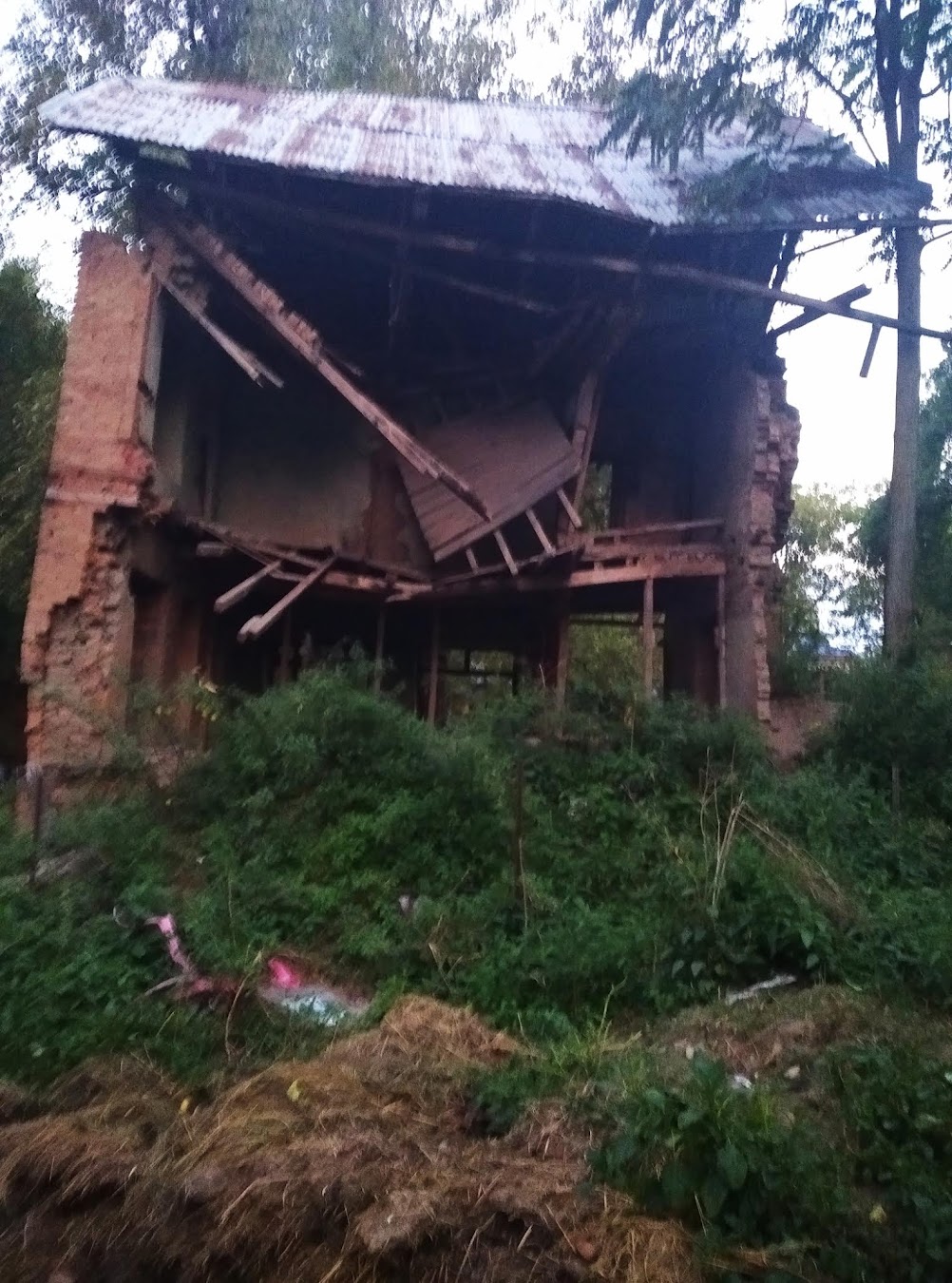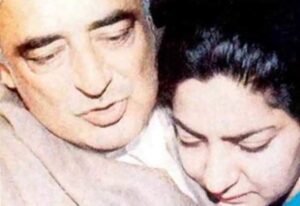The Sangrampora massacre of 1997 stands as a haunting testament to the violent turmoil that has plagued the region of Kashmir for decades. This tragic event, which unfolded in the village of Sangrampora, Badgam, left an indelible mark on the collective memory of the Kashmiri pandits. 8 people were killed by radical terrorists. By then most of the Kashmiri Pandits had already left Kashmir in 1990

The Background of Sangrampora Massacre 1997
In 1997, Kashmir was already grappling with an extended period of insurgency and counterinsurgency activities. The region had experienced a surge in violence since the late 1980s and early 1990s. Terrorists had achieved success in securing the release of their fellow terrorists in exchange for releasing Rubaiya Sayeed from Indian prisons as far back as 1989. During this tumultuous period, radical terrorists had already carried out brutal and heinous acts against Kashmiri Pandits in the Nadimarg area, including the horrific gangrape of individuals like Girija Tikoo and Sarla Bhat.
Furthermore, terrorists were actively plotting the release of Masood Azhar, an infamous figure, and they ultimately succeeded in this endeavour in 1999. In the pursuit of their goals, these terrorists escalated their attacks on foreign nationals and Kashmiri Pandits. A grim example of this occurred in July 1995 when six foreign tourists were abducted in Jammu and Kashmir. The kidnappers, who identified themselves as Al-Faran (an alias of the Harkat-ul-Mujahideen), included the release of Masood Azhar among their demands. Tragically, one hostage managed to escape, while another was discovered in a decapitated state in August. Regrettably, the fate of the remaining hostages remains unknown to this day. The FBI had conducted multiple interrogations of Azhar during his time in prison, focusing on the circumstances surrounding these kidnappings.
In their frustration, terrorists once again turned their attention to Kashmiri Pandits. On the fateful night of March 21, 1997, a horrifying incident unfolded in the Sangrampora village, located in the Badgam District of Kashmir. Unidentified attackers ruthlessly targeted the Kashmiri Pandit community on a sacred Friday. These assailants approached the homes of Kashmiri Pandits, specifically singling out eight individuals. They lured these individuals outside their residences and proceeded to fatally shoot seven of them, leaving Ashok Kumar Pandit critically wounded and unconscious due to a gunshot injury.
Modus operandi of Terrorists
On March 21, 1997, a group of unknown assailants targeted the Kashmiri Pandits in Sangrampura village in Badgam District, Kashmir. The attackers knocked on the doors of the Pandits and called out the names of eight individuals. When the victims opened their doors, the gunmen opened fire, killing seven of them and leaving one critically injured.
The victims of the Sangrampora massacre were:
- Sanjay Bhat
- Vijay Bhat
- Pyare Lal
- Triloki Nath Bhat
- Bhushan Lal
- Avtar Krishen Pandit
- Ashok Kumar Pandit
- Dileep Bhat
Post Sangrampura Massacre 1997
In response to the brutality, some Muslims in the area expressed deep outrage and organized a partial strike to protest the heinous crime. The villagers came together to perform the last rites of the victims, an event attended not only by Muslims but also by Sikhs from neighbouring areas.
The Bharatiya Janata Party called for the dismissal of the Farooq Abdullah government in the wake of the massacre. The tragedy led to the dissolution and reorganization of Panun Kashmir. It is believed that the motive behind the killings was to discourage Hindus from returning to Kashmir.
Following the massacre, the Government of Jammu and Kashmir provided two-room flats to Kashmiri Hindus in a specially built colony in Sheikhpora, Budgam District.
The Enduring impact of Sangrampura Massacre
The enduring memory of Sangrampora persists, casting a long shadow across the collective consciousness of the Kashmiri population. It stands as an indelible and haunting reminder of the significant and lasting hardships inflicted by prolonged conflict on civilian communities. Moreover, this tragic episode served to exacerbate and deepen the already existing divide, fostering increased mistrust and animosity between the local inhabitants and the security forces that were tasked with maintaining order and security in the region. The scars left by Sangrampora serve as a poignant testimony to the complex and multifaceted nature of the challenges faced by Kashmir and the persistent need for reconciliation, healing, and a sustainable path toward lasting peace.
FAQs of Sangrampora Massacre of Kashmiri Pandits
What is the Sangrampora massacre of 1997?
The Sangrampora massacre of 1997 is a tragic event that occurred in the village of Sangrampora, Srinagar, in the region of Kashmir. It involved a targeted attack on the Kashmiri Pandit community and left a profound impact on the collective memory of the Kashmiri people.
What was the background of the conflict in Kashmir in 1997?
By 1997, Kashmir was already embroiled in a prolonged period of insurgency and counterinsurgency operations. The region had experienced a surge in violence since the late 1980s and 1990s, marked by various incidents of terrorism and conflict.
Can you provide some historical context for the conflict in Kashmir leading up to 1997?
In 1989, terrorists successfully secured the release of their comrades from Indian jails, setting the stage for escalating conflict. The same year, there were brutal killings of Kashmiri Pandits in Nadimarg, including horrifying incidents like gang rape. The attempt to secure the release of Masood Azhar in 1995 resulted in the kidnapping of foreign tourists.
What happened during the Sangrampora Massacre?
On the night of March 21, 1997, unidentified assailants specifically targeted the Kashmiri Pandit community in the Sangrampora village, Badgam District. They lured individuals outside their homes and fatally shot seven of them, leaving one critically wounded.
Who were the victims of the Sangrampora Massacre?
The victims of the Sangrampora massacre included Sanjay Bhat, Vijay Bhat, Pyare Lal, Triloki Nath Bhat, Bhushan Lal, Avtar Krishen Pandit, Ashok Kumar Pandit, and Dileep Bhat. They were targeted solely because of their Kashmiri Pandit identity.
How did the community and authorities respond to the Sangrampora Massacre?
In response to the brutality, some Muslims in the area expressed deep outrage and organized a partial strike to protest the heinous crime. Villagers from various communities came together to perform the last rites of the victims, emphasizing solidarity and unity.
What were the political implications of the Sangrampora Massacre?
The Bharatiya Janata Party called for the dismissal of the Farooq Abdullah government following the massacre. The tragedy also led to the dissolution and reorganization of Panun Kashmir. It is believed that the motive behind the killings was to discourage Hindus from returning to Kashmir.
How did the government respond to the aftermath of the Sangrampora Massacre?
Following the massacre, the Government of Jammu and Kashmir provided two-room flats to Kashmiri Hindus in a specially built colony in Sheikhpora, Budgam District, as part of the rehabilitation efforts.
What enduring impact did the Sangrampora Massacre have on Kashmir?
The memory of Sangrampora continues to linger in the collective consciousness of Kashmir, serving as a haunting reminder of the toll that prolonged conflict can exact on civilian populations. It further intensified the divide and mistrust between the local populace and the security forces, underlining the complex nature of the challenges faced by Kashmir.
How can reconciliation and lasting peace be achieved in Kashmir after such traumatic events?
Reconciliation and lasting peace in Kashmir require a multifaceted approach, including dialogue, trust-building measures, and efforts to address the grievances of all communities involved. It is imperative to acknowledge the past while working towards a future marked by understanding, healing, and sustainable peace.
List some other Massacres where Kashmiri Pandits were Killed
24 people were killed in Nadimarg, known as Nadimarg Massacre. 23 Kashmiri Pandits were killed in Wandhama known as Wandhama Massacre.




